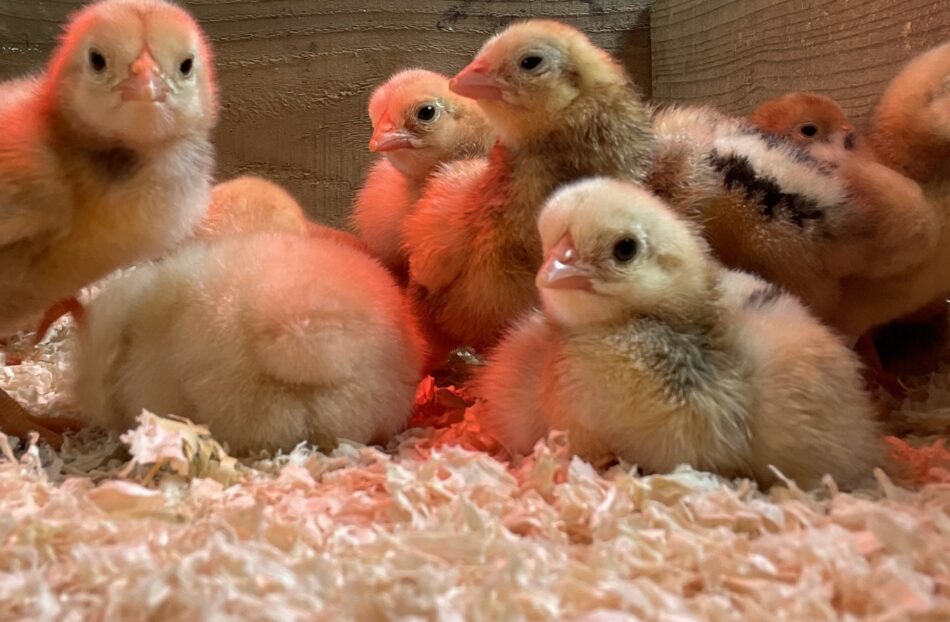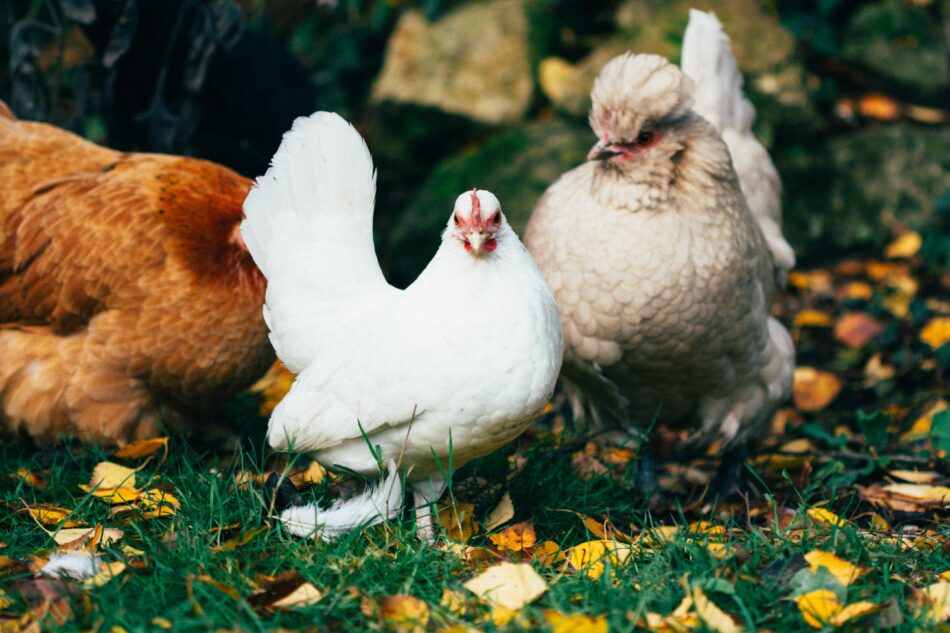Is fall the best time to raise chicks?

Chicks are generally associated with springtime, but have you thought about raising chicks in the fall? Getting an earlier start to raising your chicks means they’ll start laying their first eggs during the spring, and watching chicks grow during the winter months is a welcome change from an otherwise stagnant season for growth. Of course, there are a few modifications to be made when starting out with chicks in the fall instead of spring, but with the right setup, your fall chicks will successfully grow into spring chickens.
Table of Contents
Benefits of raising chicks in fall
Like spring, fall is a season of change. In nature, birds (your hens included) are more likely to sit on a nest of eggs in the spring, knowing there will be lush vegetation and warmer weather for their chicks to thrive in. But, with a helping human hand, those conditions can be simulated in your own backyard.
Cooler temperatures for brooders
This consideration is especially important for flock-raisers in warmer climates. Since chicks need to be kept under a heat source until they are fully feathered, the added heat in already warm weather can turn dangerous in a hurry. Chicks may succumb to heat stroke if they get too warm in their brooder – particularly closed brooder pens. In the mild temperatures of fall, your chicks aren’t at risk of overheating from the weather in addition to their brooder plate or lamp.
Fully feathered before winter
Chicks are fully feathered by 6-12 weeks, depending on their breed. By the time they are 12 weeks old, they are ready to move into their Eglu Cube chicken coop. With the dual-layer insulation of the Eglu Cube, you’ll feel confident about moving your young adult hens to their outdoor setup, knowing they’ll be warm in the falling temperatures.
You’ll still want to coordinate when to move your chicks outside with the weather. Choose a week where the lows at night will be 50℉ or above to help their transition easier. Most chicks hatched in September will be ready to move into their Eglu Cube by November – which is well in advance of most areas experiencing frigid temperatures.
Fresh eggs by spring
When chicks are hatched in the spring, their long-awaited first egg usually does not make its appearance until late summer. And, since some climates see scorching summer temperatures, sometimes their first eggs are delayed until the fall. Egg production is difficult for a newly-mature hen to master while trying to keep their energy expenditure to a minimum.
Your fall chicks will be able to supply your family with fresh eggs by the time spring comes around. And, since they’ll have a season of egg laying under their belts, the likelihood of them continuing their egg production through the summer is much higher than if they had just gotten started. And, with a fun accessory like an egg skelter, your kitchen will be ready for spring and a steady supply of eggs.
Preparation for raising chicks in fall
Obtaining chicks in the fall may be slightly more difficult than in the spring. Large retailers that usually sell chicks in the spring will likely not carry chicks any other time of the year. But, hatcheries typically ship chicks all year round, depending on your location. Their breed selection may be more limited in the fall, so be sure to ask if you can request a particular breed, or if the breed you intend to raise will be available.
Other options include:
- Incubating fertilized eggs (purchased from a breeder, or from your own flock if you have a rooster)
- Buying chicks from individuals or breeders
Some breeders may have waiting lists in preparation for the slower seasons, to reach out sooner rather than later to secure your chicks.
Safely raising chicks in fall
Fall may be an “off-season” for chicks, but that doesn’t mean that chicks can’t be successfully and safely raised this time of the year. In fact, in some parts of the US, it may actually be more beneficial to raise chicks in the fall instead of the spring.
Predator activity
Predators are much more active in the spring than in the fall. Those that are still active in the fall will decrease their movement as the temperatures decline – which means by the time your chicks are old enough to move to their outdoor setup. While your chicks are in their brooder, you can make adjustments to their chicken coop and run to make it more predator resistant – without having extra vegetation making modifications more difficult.
Dietary considerations
Chicks don’t need rich foods like treats or insects until they have grown accustomed to their feed. If offered these foods too soon, they will prefer them over the balanced diet that laying pellets or crumbles provide. Fall and winter offer much fewer insects and grazing opportunities than springtime – ensuring your chicks will adhere and grow to love their diet that you’ve painstakingly planned out for them.
This same school of thought applies to any adult hens you may adopt during the fall. As part of your fall chicken coop preparations, you can make sure your new additions grow accustomed to the new diet they’re offered. By spring, they’ll be familiar with and well nourished by their laying feed.
Omlet and your fall chicks
No matter what time of the year, Omlet makes it safe and enjoyable to raise chickens. With our safe and comfortable Eglu chicken coop and run and Chicken coop weather protection, your fall chicks will be ready for the wintertime in their outdoor setup. Be sure to grab an egg skelter along with your chicks for the fall – you’ll be needing it to display those fresh eggs by the beginning of spring.
This entry was posted in Chickens

